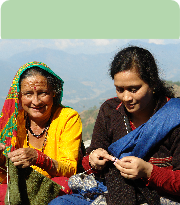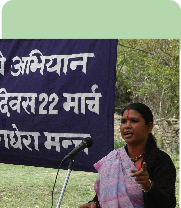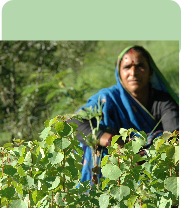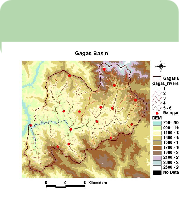
The plan is to undertake eco-restoration efforts across the drainage areas, in partnership with resident communities, in a phased manner over the next few years. In the first phase, in 2006–7, several elements have been put into place with the residents of two major gadhera areas – Dusad and Kanari.
The development of Self Help Groups of women in this area has led to the creation of a dynamic basin-level federation or Manch which have effective dialogue with other stakeholders creating a multi-stakeholder platform. Following a meeting of several hundred residents, the Manch is committed to the renewal of the hydrological cycle through the promotion of community forestry/water conservation initiatives, appropriate technology and livelihood programs.


It is significant that the federation is chaired by a woman activist, Radha Devi chosen by the communities. Through its programme of regular meetings, capacity building workshops, and social audits, the Manch has evolved into effective community leadership. Making its presence felt through policy change at the State level.
The Manch’s focus on livelihoods have resulted in training for farmers in Organic Farming Certification; training in animal husbandry; the promotion of horticulture and rain-fed crops; field trials of high-value crops such as chamomile and aloe vera and continued support for off-farm micro-enterprises such as hand-knitted garments through Umang.

Over 350 hectares of village commons are now under protection, supported by 10 community-run nurseries. In phase one over 160,000 saplings were raised, and 80,000 mature saplings of 35 different native species planted. Significantly, we have secured the active participation and cooperation of the state Forest Department, which now works together with the communities for the restoration of vegetal cover and revival of the traditional system of khals in catchment areas under their direct control.

The Manch is also engaged in the collection of data and monitoring indicators for bio-diversity, geological, hydrological and meteorological aspects. Community members have been trained to monitor bio-diversity in the commons, stream flows in the gadheras as well as the quality of drinking water. In addition ten weather stations are being operated by barefoot hydrologists and data is being shared with communities through a quarterly newsletter, called Gadhera!
The Manch
Livelihoods
Community
Forestry
Environmental Monitoring







